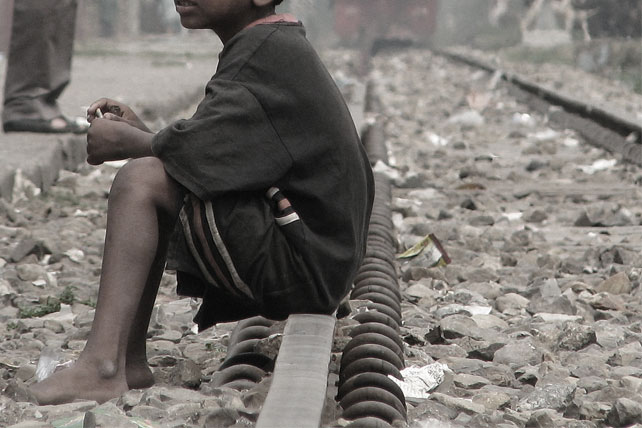International child rights are being used by some countries to justify the execution of people for drug offences, despite this practice being illegal under international law.
The UN’s Convention on the Rights of the Child (CRC), adopted in 1989, stipulates that “governments must protect children from the illegal use of drugs and from being involved in the production or distribution of drugs”, and has been ratified by every UN member state apart from the United States. Additionally, the International Labour Organisation’s (ILO) Worst Forms of Child Labour Convention – internationally adopted in 1999 – states that governments must “take immediate and effective measures to [prohibit and eliminate] … the use, procuring or offering of a child for illicit activities, in particular for the production and trafficking of drugs"
Every state party to these conventions must regularly report on their implementation: every five years to the Committee on the Rights of the Child (“CRC Committee”) and every two years to the ILO Committee of Experts on the Application of Conventions and Recommendations (“ILO Committee”).
During this reporting process, several countries regularly detail their use of the death penalty for drug offences as part of their fulfilment of their Convention obligations.
In a report published by the Human Rights Law Review in April 2017, Damon Barrett – the Director of the International Centre on Human Rights and Drug Policy – writes that neither Committee has challenged this practice. Rather, both have – on occasion – seemed to encourage such behaviour.
Authorities in Egypt, Bahrain, Sudan, Singapore, and Guyana have all detailed their respective country’s use of the death penalty under the pretence of the CRC, yet the CRC Committee has failed to challenge any of them on this point. Similarly, whilst Iran did not mention the death penalty specifically in the reporting process, its initial report to the CRC Committee stated that, in the context of drug control, it applied “the severest punishment stipulated in law … for cases involving the exploitation of children”.
Iran is one of the world’s most prolific users of the death penalty, second only to China. In 2015 alone, Iran executed at least 977 people, the majority of whom were killed for drug offences. Given this repressive record, the CRC Committee’s failure to question the meaning of “severest punishment” is suggestive of its acquiescence to the implementation of the death penalty for drug offences.
Barrett warns that “unless these laws and policies are challenged by the Committees, there is the risk that [states] have been provided with a clean ‘bill of health’ by human rights monitors or, put another way, that child rights mechanisms demonstrate a structural bias towards the repressive status quo”.
A similar attitude of passivity has been adopted by the ILO Committee; in some instances, it could be seen to extend beyond passivity and into the realm of active support. In 2006, the ILO Committee noted that Section 347 of China’s Criminal Law provided “sufficiently effective and dissuasive penalties for the use, procuring or offering of a child for the production and trafficking of drugs”. Section 347 includes the option of the death penalty for drug trafficking or production, and makes the use of a minor an aggravating factor.
In his report, Barrett points out that addressing the issue of the death penalty for drug offences is well within the remit of these Committees. The CRC Committee, he notes, frequently makes recommendations that relate to adults, due to their direct or indirect effects on children’s lives.
The failure of the Committees in this respect is illustrative of the international legal community’s disjointed approach to human rights; rather than complementing and supporting one another, these human rights instruments seem to be operating in isolation. The periodic reporting processes with the Committees, which are meant to facilitate a “constructive dialogue“, have been ineffective at reducing the rate of the death penalty being imposed for drug offences – a major human rights issue.
The 2016 UN General Assembly Special Session (UNGASS) on the World Drug Problem offered a glimmer of hope for human rights advocates when the CRC Committee signed an open letter stating that “the negative impact of repressive drug policies on children’s health and their healthy development often outweighs the protective element behind [punitive drug] policies”.
If the CRC and the ILO Committees are able to translate such an understanding into their implementation of the Conventions, then they may be able to improve the human rights consequences of many countries’ drug policies, and reduce the misappropriation of child rights as an excuse for capital punishment.


